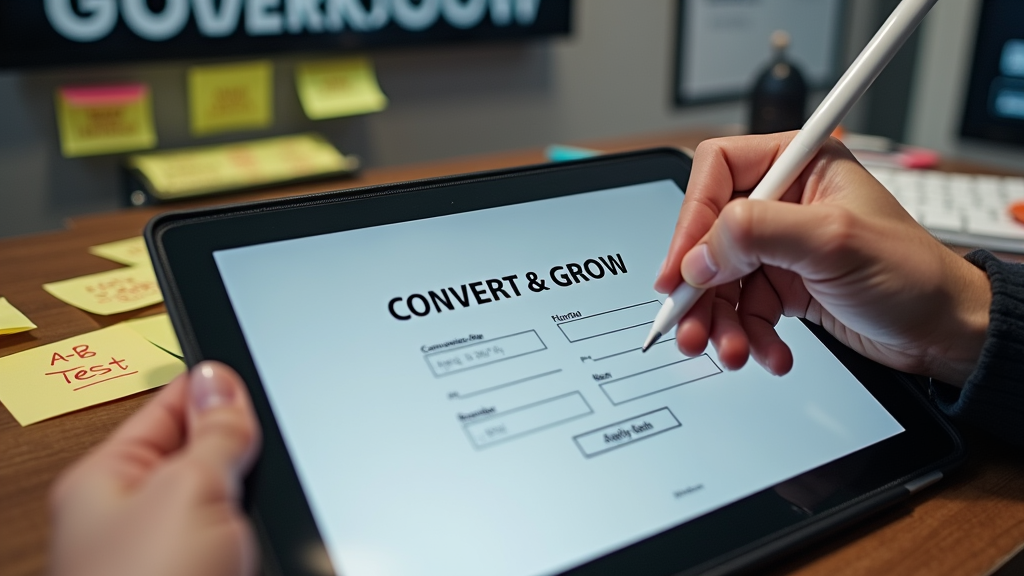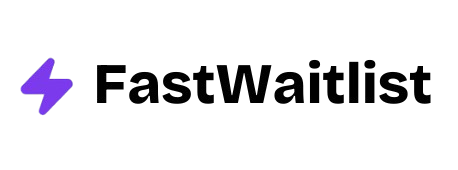
Introduction
Most businesses struggle with email list basics because they chase quick fixes and random tactics. You might be collecting email addresses, but without a clear strategy, you're likely getting low-quality subscribers who rarely open your emails or buy your products. Random pop-ups, generic lead magnets, and unclear value propositions push potential customers away instead of drawing them in.
Building an email list that actually converts requires a systematic approach focused on attracting the right people. Your success depends on creating valuable resources your ideal customers truly want, placing them strategically where these customers already spend time, and nurturing relationships through relevant, helpful content. With the right framework, you can build a list of engaged subscribers who look forward to your emails and are ready to buy what you offer.
Define Your Target Audience
You need to know exactly who you want on your email list before you start building it. Getting subscribers who don't care about your product will hurt your email marketing results and waste your time.
Creating buyer personas helps you understand your ideal subscribers better. Think about their job roles, daily challenges, and what makes them interested in your solution. Write down these details and update them as you learn more about your audience. This information will guide your list-building strategy and help you create content that really connects with potential subscribers.
Here are the most effective ways to research your audience:
- Surveys: Send quick questions to current customers about their needs
- Customer Interviews: Talk directly with users to understand their challenges
- Social Listening: Watch conversations about your product category on LinkedIn and Twitter
- Competitor Analysis: Study who follows your competitors and what content they engage with
- Website Analytics: Look at which pages attract the most visitors and what content they read most
Choose Your Email Service Provider
To start your email list, you'll need a reliable email service provider (ESP). This software will be your command center for managing subscribers, sending emails, and tracking results.
Your ESP needs to match your business goals and technical skills. Some providers focus on simplicity with drag-and-drop editors and basic automation, while others offer advanced features like behavior tracking and complex automation workflows. The best choice depends on your list size, budget, and how you plan to use email marketing.
Here's how popular email service providers compare:
| Feature | Mailchimp | ConvertKit | Klaviyo |
|---|---|---|---|
| Automation | Basic workflows, simple triggers | Creator-focused automation, visual builder | Advanced e-commerce automation |
| Pricing Structure | Free plan available, scales with subscribers | Subscriber-based pricing | Based on contacts and features |
| Ease of Use | Very beginner-friendly | Moderate learning curve | More technical setup |
| Integration Options | Wide range of basic integrations | Focus on creator tools | Strong e-commerce focus |
Create a Compelling Lead Magnet
A lead magnet is free content you offer in exchange for contact information. The best lead magnets solve specific problems your audience faces right now. Think of it as giving away your expertise to build trust and start relationships with potential customers.
Your lead magnet needs to match what your audience wants most. Look at common questions in your industry, check social media discussions, or survey your existing customers to understand their challenges. The more closely your lead magnet addresses these pain points, the more likely people will share their email address with you.
Here are proven lead magnet types that work well:
- Ebooks: In-depth guides that solve complex problems
- Checklists: Quick reference tools for common tasks
- Templates: Ready to use documents that save time
- Video Courses: Step by step visual learning
- Free Trials: Hands-on experience with your product
Before spending time creating your lead magnet, you can test if people actually want it. FastWaitlist helps you validate your lead magnet idea by creating a simple landing page to gauge interest. This way, you'll know if your concept resonates with your audience before investing resources in development.

Design High-Converting Opt-in Forms
Your opt-in forms need to appear where your visitors are most likely to take action. To grow your email list effectively, place forms strategically on your highest-traffic pages, such as your homepage, blog posts, and resource sections. Consider adding a form at the end of your most popular content where readers are already engaged with your message.
Your forms should include clear, compelling elements that encourage signups. Start with a strong headline that highlights the value you're offering. Add a brief description of what subscribers will receive, and use action-oriented button text like "Get Started" or "Join Now." Keep your form fields minimal. Most successful forms only ask for an email address and perhaps a first name to reduce friction.
Testing different versions of your opt-in forms will help you find what works best for your audience. Try different headlines, button colors, or form layouts. Pay attention to which changes increase your conversion rate. Remember to test one element at a time so you know exactly what's making the difference. Your form design will improve as you learn what resonates with your specific visitors.
Optimize Your Landing Pages
Your landing page is the gateway to growing your email list. A well-designed landing page can turn casual visitors into loyal subscribers by clearly showing them the value they'll get from signing up. Keep your message simple and focused on one main offer or benefit that speaks directly to your audience's needs.
Every successful landing page needs specific elements to work well. Start with a compelling headline that grabs attention and clearly states your offer. Include a brief description that explains the benefits of subscribing, and add social proof like subscriber numbers or testimonials to build trust. Your signup form should be simple, asking only for essential information like email address and name. The submit button text should be specific, such as "Get My Free Guide" instead of just "Submit."
Most of your visitors will view your landing page on their phones, so mobile optimization is crucial. Your page should load quickly and look good on all screen sizes. Make sure text is easy to read, buttons are large enough to tap, and forms work smoothly on mobile devices. Test your page on different devices regularly to ensure everyone has a good experience, no matter how they visit your site.
Implement Content Upgrades
Content upgrades give your readers something valuable in exchange for their email address. Unlike generic lead magnets, these special bonuses directly relate to the content they're already reading. For example, if you write about productivity tips, you might offer a printable daily planner template as your content upgrade.
Your content upgrade should match what your readers want most from your article. Look at your most popular content and create upgrades that expand on those topics. If readers love your article about email marketing, offer them email templates. For blog posts about social media, provide a social media calendar. The closer the match between your content and the upgrade, the more likely readers will subscribe.
Getting started with content upgrades is simpler than you might think. Add an eye-catching button or form near your most relevant content sections. Make sure your sign up process works smoothly on all devices. Keep delivery immediate and automatic using your email marketing software. You can test different positions for your content upgrade offers, such as within the content, at the end of posts, or in pop-ups, to find what works best for your audience.
Set Up List Segmentation
Your email list becomes more valuable when you sort subscribers into specific groups. Segmentation helps you send the right messages to the right people at the right time. This simple practice can lead to better open rates and more sales for your business.
You can segment your subscribers based on several meaningful factors. Some people might sign up through your pricing page, while others come from your blog. Their behavior shows what they care about. You might group them by their industry, company size, or how often they open your emails. Professional marketers often combine multiple factors to create detailed subscriber profiles.
Dynamic segmentation updates automatically as your subscribers take different actions. For example, when someone clicks a link about your product features, they move into a group interested in product details. This automatic sorting saves you time and keeps your messages relevant. Your email marketing platform can handle these updates without you needing to manage lists manually.

Establish Growth Channels
Growing your email list requires more than one approach. Using multiple channels helps you build subscribers consistently while reducing your dependence on any single source of growth.
Here are the most effective channels to grow your list:
-
Social Media Marketing: Share valuable content snippets on LinkedIn, Twitter, and other platforms where your audience spends time. Include clear calls to action that lead to your signup forms.
-
Paid Advertising: Use targeted ads on Google or social platforms to promote your lead magnets and landing pages. Start small and scale what works.
-
Strategic Partnerships: Work with complementary businesses to create joint webinars, content, or events. This lets you tap into established audiences.
-
Content Marketing: Create blog posts, videos, or podcasts that solve specific problems. Include relevant opportunities to join your list throughout your content.
-
Referral Programs: Give your subscribers incentives to share your newsletter or content with others who might benefit from it.
Focus your energy on channels where your ideal subscribers already gather. Start with one or two channels and master them before expanding. Track your results to understand which channels bring in the most engaged subscribers, then gradually expand to others as you build momentum.
Monitor Analytics and KPIs
Your email list's performance tells an important story about your audience. Start by watching your subscriber count, but pay attention to open rates and click rates too. These numbers show you if your content connects with readers. Think of these metrics as your audience's applause meter letting you know what works and what needs improvement.
Tracking conversion rates helps you understand where your subscribers come from. Look at which signup forms bring in the most subscribers and which ones need work. For example, if your website's popup form gets more signups than your footer form, you might want to adjust the footer form's placement or message. Pay special attention to which lead magnets attract the most subscribers.
Use your analytics to make your list stronger over time. When you spot a form or campaign that works well, try to understand why. Maybe it's the timing of your emails, the subject lines you use, or the type of content you share. Make small changes based on what the numbers tell you, and keep testing to find what gets the best results with your audience.
Maintain List Health
Your email list needs regular cleaning, just like your home. A clean email list helps you save money and keeps your messages reaching the right people. When you remove inactive subscribers and incorrect email addresses, you improve your sender reputation and get better results from your campaigns.
Watching how people interact with your emails tells you a lot about your list's health. Look for which subscribers open your emails, click your links, or buy your products. This information helps you understand what works and what doesn't. You can use these insights to send better emails and keep your subscribers interested.
Sometimes subscribers stop engaging with your emails. You can try to win them back with a re-engagement campaign. Send them a special message asking if they still want to hear from you. Give them a good reason to stay subscribed, like exclusive content or a special offer. If they don't respond after a few attempts, it's better to remove them from your list. Quality beats quantity when it comes to email marketing success.
FAQ
How quickly can I build a quality email list?
Building a quality email list takes time and consistent effort. You can start seeing results within a few weeks, but growing a valuable list usually takes 3 to 6 months of active work. Focus on creating valuable lead magnets and optimizing your opt-in forms. Remember that a smaller list of engaged subscribers is more valuable than a large list of uninterested ones.
What's a good conversion rate for opt-in forms?
Conversion rates vary by industry and offer type. Generally, a good conversion rate ranges between 2% to 5% for most opt-in forms. Pop-ups tend to convert slightly higher at 3% to 7%. Your specific results will depend on your offer's value and how well it matches your audience's needs. Keep testing different approaches to find what works best for your specific situation.
How much should I invest in list building?
Your investment should align with your business goals and current stage. Start with the basics: an email service provider and a simple lead magnet. As you grow, consider investing in more advanced tools for automation and analytics. Begin with your available resources and scale up as your list generates returns. The key is to start small and expand based on results.
How do I ensure GDPR compliance?
GDPR compliance requires clear consent from your European subscribers. Here's what you need to do:
- Explicit consent: Use clear checkboxes (not pre-checked)
- Clear privacy policy: Explain how you'll use their data
- Easy unsubscribe: Make it simple to opt out
- Data protection: Store subscriber data securely
- Documentation: Keep records of how and when people subscribed
Should I buy email lists?
No, you should never buy email lists. Purchased lists hurt your sender reputation, violate privacy laws, and rarely lead to sales. They often result in high spam complaints and could get your email account suspended. Build your list organically through valuable content and legitimate opt-ins. This approach takes longer but creates lasting business relationships.
Conclusion
Building an email list is a straightforward process that brings lasting value to your business. You'll need an attractive lead magnet, a well-designed signup form, and a clear value proposition for your subscribers. Regular testing and optimization of your forms, along with consistent delivery of valuable content, will help grow your list naturally over time.
Starting your list building journey today will give you a significant advantage in connecting with your audience. The sooner you begin, the more time you'll have to build meaningful relationships with your subscribers. Start small but start now. Even a simple signup form can lead to your first valuable subscribers.
Ready to start building your email list? Create a professional waitlist page with FastWaitlist to begin collecting subscribers today.
